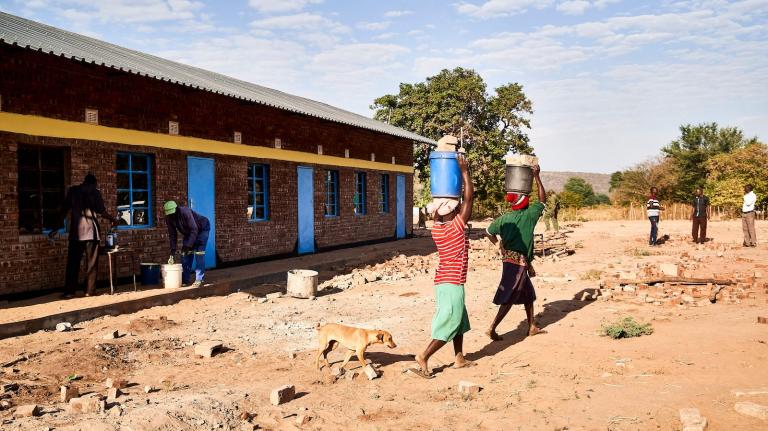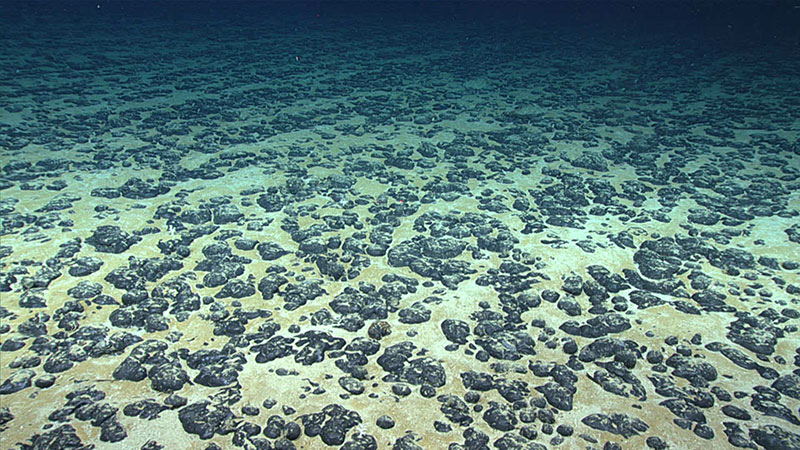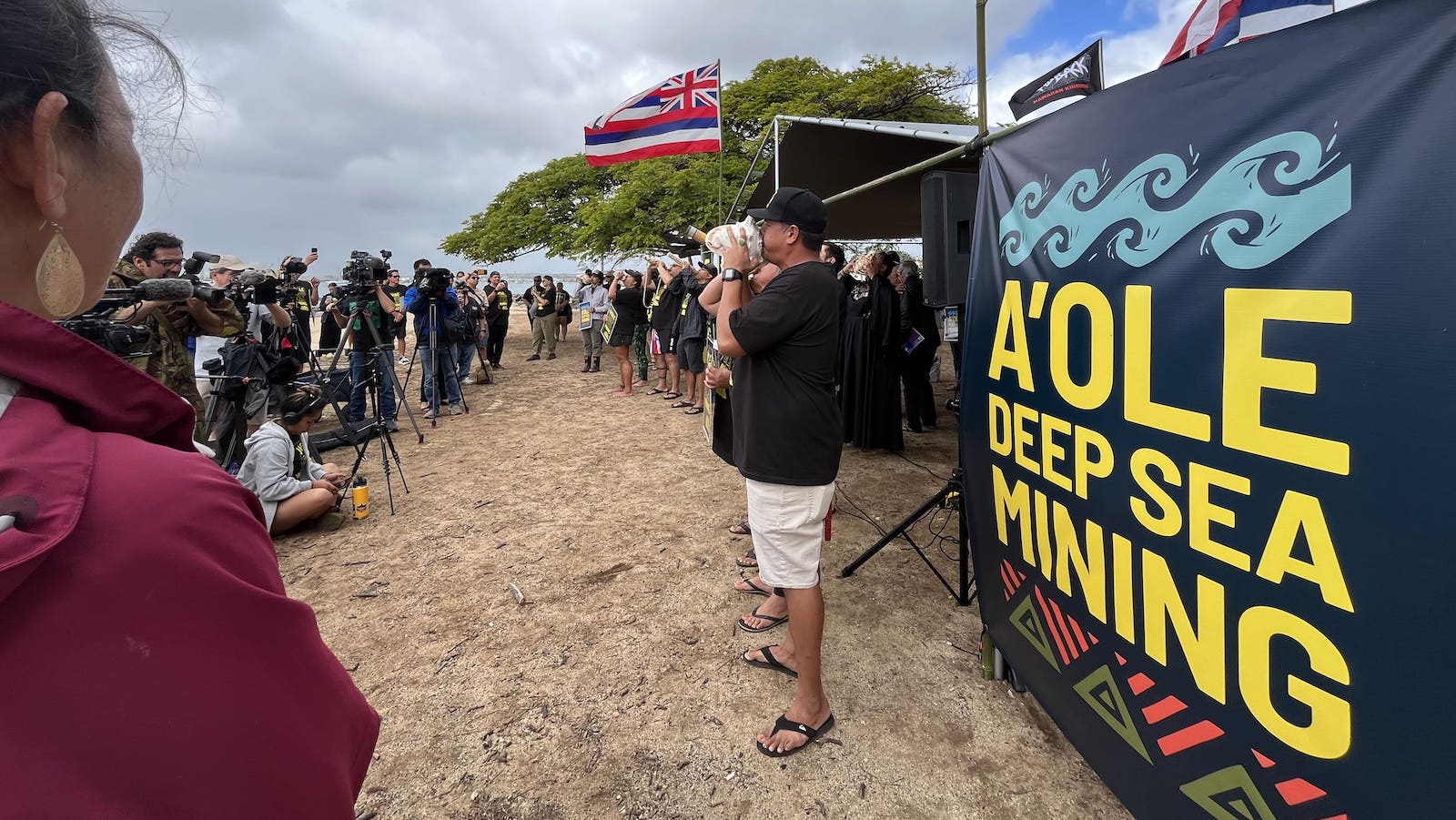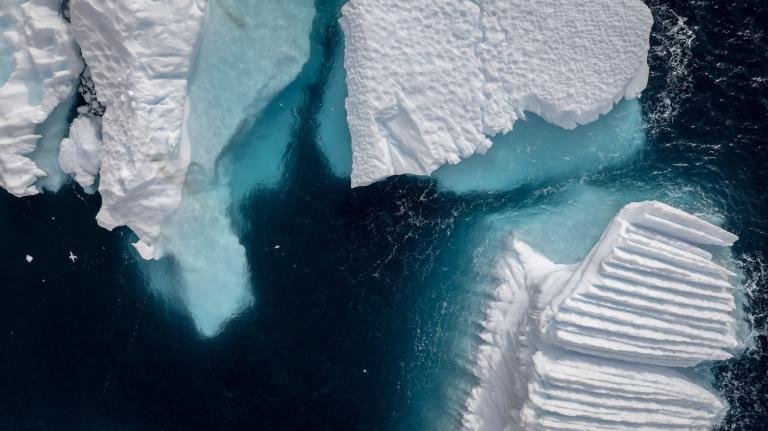In Kingston, Jamaica, by secret ballot, an election was held earlier this month. The lands whose governance was at stake are vaster than any nation, and it’s possible the consequences of the vote will be felt for eons. More than half of the world’s ocean floor is under the jurisdiction of an intergovernmental body called the International Seabed Authority, or ISA. Its members have spent the last three decades in deliberations with a single purpose: crafting an international legal regime for a field of commercial activity that does not yet exist. Their mandate is to determine how — and whether — to allow the nations of the Earth to mine the sea.
The cold floor of the deep ocean is a place human beings know very little about. One thing we do know is that things there happen extremely slowly. The mercurial forces that condition life for the creatures of the Earth’s surface — sunlight, winds, the seasons, the weather — have little reach into the deep-sea ecosystem. When scientists visit, their machines’ tracks in the sediment are still visible a quarter-century later. The world’s oldest living organisms rely on this stability to make their home here, sheltered in darkness under the ocean’s colossal weight.
Once in a while, a bit of organic matter from the livelier waters above makes its way down to the ocean floor: a shark’s tooth, the scale of a fish, a shell fragment. Once it’s there, minerals begin to accrete around this core. There are competing theories of the chemical process by which this occurs, but the result is a concretion that grows at the pace of a few centimeters every million years to form a small rock known as a polymetallic nodule. These are often compared to potatoes in size and shape. They’re found around the world, but the largest concentration is in the Clarion-Clipperton Zone, a region the size of the United States in the eastern Pacific Ocean, where trillions of nodules are strewn across the abyssal plains.
In the 1960s, an American mining engineer named John Mero publicized a tantalizing idea: that these nodules were an untapped fortune ready for the taking. Polymetallic nodules contain cobalt, nickel, manganese, and copper — metals with a range of industrial applications, most notably in steelmaking, that had played a material role in the economic growth of the U.S. and for which new mines were then desperately sought worldwide. In a 1960 article in Scientific American, and a 1965 book called The Mineral Resources of the Sea, Mero argued that, should a viable technology be devised to vacuum up the nodules at scale, it would yield cheaper access to the increasingly valuable metals than terrestrial mining — and a significantly greater store of them than could be found anywhere on land.
These claims caught the attention of both private industry and governments. In short order, the dredging technology that Mero had imagined was developed, and commercial extraction appeared imminent. All that stood in the way was the task of devising a legal framework to regulate access to the international waters in which the buried wealth lay. In 1973, the United Nations began deliberations over a new so-called Law of the Sea. “With the law straightened out, we could be doing real mining in a couple of years,” one mining executive told The New York Times in 1977.
But all the excitement coincided with a movement in global politics, sometimes called third-worldism, formed in the wake of the 20th century’s anticolonial independence movements. Representatives of the world’s poor countries sought to forestall a reprise of the unequal resource exploitation that had enabled the colonial powers’ development while holding back those in the periphery, and demanded that the treaty include specific rights for developing countries. In 1982, evincing an internationalist spirit that seems almost irretrievably utopian today, the U.N. issued its third Convention on the Law of the Sea, or UNCLOS, declaring the seabed the “common heritage of mankind,” and established the ISA. This body was given the authority to govern future exploration and eventually regulate mining of the seabed, as well as the responsibility to protect the marine environment from the effects of mineral exploration and extraction. Among its protections for developing countries was a requirement for developed countries that receive licenses to explore the seafloor to set aside half of the regions they survey in reserve for only the developing countries to access.
The industrial powers weren’t thrilled. “The United States, West Germany, and virtually every other developed country at that time refused to ratify the Law of the Sea Convention, because of the seabed mining provisions,” said Matthew Gianni, the political and policy advisor of the Deep Sea Conservation Coalition. “They thought it was too socialist and gave away too much power to developing countries.” Today, 169 states and the European Union have signed the treaty, but — despite years of failed efforts from American presidents in both parties — the U.S. remains a holdout. Until the Senate votes to ratify UNCLOS, the U.S. cannot access mining concessions in international waters.
In 2000, the ISA began issuing exploration contracts for national scientific agencies to begin surveying sections of the seabed even before the regulations for actual mining were written. Over the course of its history, in the eyes of its critics, the body has become increasingly friendly to industrial concerns, and in 2010, exploration contracts began to be awarded to private companies.
During this period, a new argument emerged for mining the sea: It might help fight global warming. The minerals in polymetallic nodules are needed for the global energy transition away from fossil fuels, some climate hawks argue, and the ocean is an easier place to get them than the land, where mining tears up rainforests and pollutes communities. The ocean-obsessed filmmaker James Cameron has characterized seabed mining as simply a lesser evil than terrestrial mining.
But it’s not self-evident that allowing some companies to mine the sea would result in decreased terrestrial mining. In fact, there’s an argument that it could actually exacerbate the problems of mining on land. “If you introduce a new source of extraction, you bring competition to the market,” said Pradeep Singh, an ocean governance expert at the Research Institute for Sustainability in Potsdam, Germany. “And if you add a new form of competition, it could force terrestrial mining to grow at an even faster rate in order to wipe out the competition.” Singh speculated that this dynamic could incentivize terrestrial miners to lower their standards in order to stay competitive, rendering mining on land even more destructive. “And then we’ll just end up with seeing more of the same old problems on land, and new problems at sea,” he said.
In 2021, a Canadian mining venture called The Metals Company made the most serious play yet for a license from the ISA to begin extracting nodules from the ocean floor. It has announced plans to file a full application by the end of this year, even in the absence of completed mining regulations. Though the company is headquartered in Vancouver, its application is sponsored by the Pacific microstate of Nauru, via a wholly owned subsidiary in that country — an arrangement that allows it to take advantage of the ISA’s policy of holding surveyed areas in trust for developing nations. “They didn’t have to go out and take a boat and go look for these nodules; they knew that they could get guaranteed nodule-rich areas of the deep seabed without lifting a finger. All they needed to do was apply for areas in reserve,” Gianni explained. What’s more, the company may have used inside knowledge when deciding which areas to apply for: In 2022, The New York Times reported that ISA staff had shared secret data with Metals Company executives on which sites had the most nodules.
The ISA’s incumbent secretary-general, Michael Lodge, a British lawyer who was first elected in 2016, is generally seen as having made it his mission to get extraction started as soon as possible. During Lodge’s scandal-marred tenure, he made public statements affirming the inevitability of commercial mining and even appeared in a promotional video for The Metals Company. In this month’s election held in Kingston, he lost his bid for a third term to Leticia Carvalho, a Brazilian oceanographer, by 79 votes to 34. Her four-year term as secretary-general will begin in 2025.
Because the ISA uses secret ballot voting, we don’t know which countries voted for Carvalho, but the unexpectedly wide margin of her victory reflected a growing discontent among member states with the ISA’s friendliness to the mining industry. This is in part because of rapid and recent advances in the state of scientific knowledge about the deep-sea ecosystem. Many scientists and conservationists now believe that what once appeared to be an ecologically cost-free extraction method — scooping up rocks off the deserted ocean floor — may in fact be profoundly disruptive to that environment’s delicate balance of life.
One of the dangers new research has highlighted comes from the meters-deep bed of very fine sediment in which the nodules sit, with particles far smaller than grains of sand. Dredging up the nodules generates clouds of metallic dust on the seafloor that suffocate organisms there. The mining process also creates a second such sediment plume closer to the water’s surface, where the muddy seawater around the nodules is discharged after extraction, blocking sunlight for midwater organisms and polluting a different ocean ecosystem.
Recent studies have also begun to suggest the nodules themselves play an important ecological role. An extremely abundant genus of sea sponge discovered in 2017 lives on the nodules. An octopus species nicknamed “Casper” for its ghostly appearance, discovered in 2016, lays its eggs on sponges attached to the nodules. And perhaps the most dramatic revelation just weeks before the ISA election: A paper published in July in Nature Geoscience posits that the metals in the nodules create a small electric current and thereby produce oxygen — challenging the widely held assumption that photosynthesis is the only natural means by which oxygen is created on Earth. The full significance of the new findings, and in particular the ecological importance of the “dark oxygen” produced by the nodules, remain unclear.
Perhaps more significant than the risks we know would result from seabed mining are those we haven’t yet learned about; the deep sea remains little understood, and many scientists say our ignorance alone renders mining an irresponsibly reckless idea. “We didn’t know the things we know now when UNCLOS was negotiated, and this makes the ISA’s dual mandate — to both create a code to open deep-sea mining and protect the marine environment — contradictory,” said Jackie Dragon, senior oceans campaigner at Greenpeace USA. Thirty-two of the ISA’s member states now support a moratorium or a precautionary pause on mining while more research is carried out. Some, like France, go even further and support an outright ban.
Carvalho, the new secretary-general, does not support a moratorium, but many environmentalists cheered her expertise in ocean science and her background as a woman from the Global South. Daniel Cáceres Bartra, regional representative for Hispanoamérica for the Sustainable Ocean Alliance, an organization with observer status at the ISA, said, “The reason we were supporting Leticia was not because of the moratorium or precautionary pause. It was because we thought the ISA needed a change of face and also somebody that would be willing to dialogue with NGOs and observers. We think she’s much more open for that.”
If there is no moratorium and The Metals Company’s ambitions are realized, Carvalho could be the first ISA secretary-general under whose watch there is actual mining in the deep ocean. If this happens, “there’s good reason to believe the environmental implications will be significant,” said Singh. “They would be irreversible on human timescales. For hundreds of years, it would be difficult for the ecology to restore to its original state once we’ve had this direct intervention to extract the minerals.”





